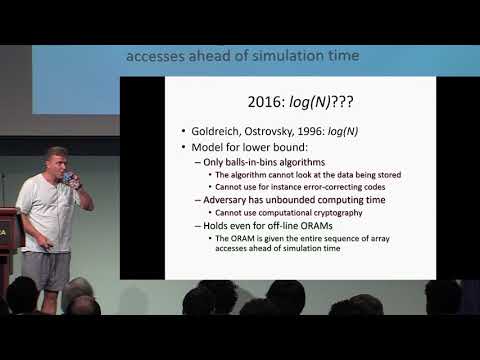CryptoDB
Yes, There is an Oblivious RAM Lower Bound!
| Authors: | |
|---|---|
| Download: |
|
| Presentation: | Slides |
| Conference: | CRYPTO 2018 |
| Award: | Best Paper Award |
| Abstract: | An Oblivious RAM (ORAM) introduced by Goldreich and Ostrovsky [JACM’96] is a (possibly randomized) RAM, for which the memory access pattern reveals no information about the operations performed. The main performance metric of an ORAM is the bandwidth overhead, i.e., the multiplicative factor extra memory blocks that must be accessed to hide the operation sequence. In their seminal paper introducing the ORAM, Goldreich and Ostrovsky proved an amortized
|
Video from CRYPTO 2018
BibTeX
@inproceedings{crypto-2018-28823,
title={Yes, There is an Oblivious RAM Lower Bound!},
booktitle={Advances in Cryptology – CRYPTO 2018},
series={Lecture Notes in Computer Science},
publisher={Springer},
volume={10992},
pages={523-542},
doi={10.1007/978-3-319-96881-0_18},
author={Kasper Green Larsen and Jesper Buus Nielsen},
year=2018
}

